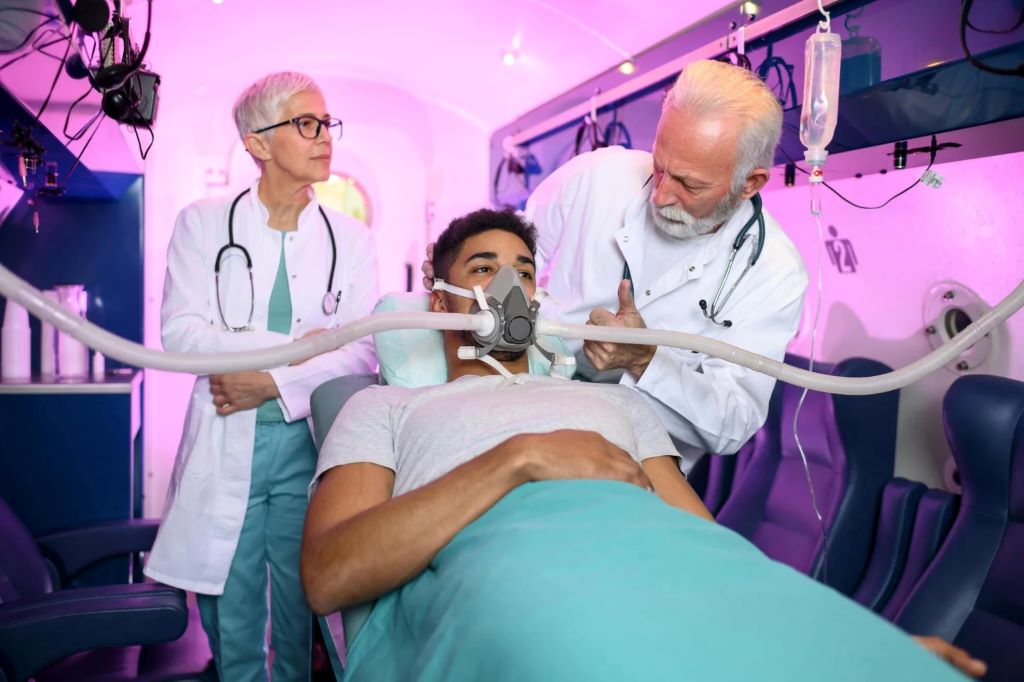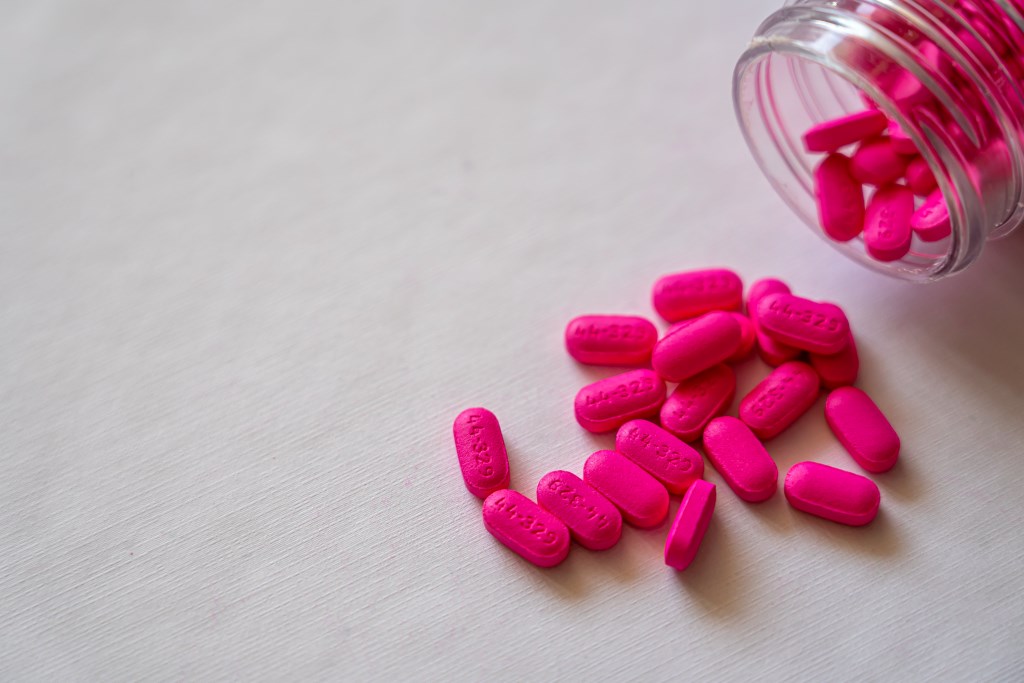Hyperbaric Oxygen Therapy (HBOT) in sports education is a frontier pushing the boundaries of how athletes recover from injuries and enhance their performance.
This innovative treatment involves breathing pure oxygen in a pressurized room or chamber, a method that has been used for decades to treat decompression sickness in divers.
However, its application in sports medicine and education is gaining momentum, offering athletes a competitive edge in recovery and performance.
The Science Behind HBOT
Hyperbaric Oxygen Therapy works by increasing the oxygen level in the blood, which accelerates the healing process of tissues and organs. Under normal circumstances, oxygen is transported throughout the body solely by red blood cells.
However, with HBOT, oxygen dissolves into all of the body’s fluids, including the plasma, central nervous system fluids, lymph, and bone, which can carry the oxygen to areas where circulation might be diminished or blocked.
This influx of oxygen helps fight bacteria and stimulates the release of substances called growth factors and stem cells, which promote healing.
Application in Sports Education
Hyperbaric Oxygen Therapy (HBOT) operates by enhancing the oxygen concentration in the bloodstream, thereby significantly speeding up the recovery of tissues and organs.
Typically, the distribution of oxygen is a task managed exclusively by red blood cells, which travel through the body to deliver this essential element to all cells.
In the unique setting of HBOT, this dynamic shifts remarkably. The treatment allows oxygen to be absorbed by all bodily fluids, not just the blood. This includes the plasma, the fluids surrounding the central nervous system, the lymphatic system, and even the bone marrow.
Such comprehensive saturation ensures that oxygen can reach even those areas where normal circulation is compromised or entirely obstructed.
The result of this oxygen-rich environment is multifaceted. It not only aggressively combats infection by aiding in the destruction of bacteria but also significantly boosts the body’s natural healing capabilities.
The process does so by stimulating the release of growth factors and stem cells, critical components in the body’s repair toolkit. These elements are vital for tissue regeneration and repair, presenting a powerful mechanism to speed up healing significantly.
Moreover, the application of HBOT has been found to reduce inflammation and improve the recovery time of injuries, making it a critical consideration for anyone looking to enhance their healing process.
For those interested in exploring how hyperbaric oxygen therapy can be a game-changer in medical treatment and recovery, visiting NextLevelHbot can provide deeper insights and guidance.
HBOT for Injury Recovery
A quick recovery from injuries is crucial for athletes. Traditional recovery methods can be effective but often require significant downtime. HBOT can shorten this recovery period, allowing athletes to return to training and competition sooner.
For example, high-profile athletes across various sports have used HBOT to speed up the healing process of sprains, fractures, and muscle fatigue.
Sports educators and trainers can incorporate HBOT knowledge into injury management and recovery protocols. Teaching athletes about the benefits of increased oxygen delivery can encourage them to consider HBOT as part of their recovery plan.
Additionally, understanding the types of injuries that HBOT can treat effectively can help athletes and coaches make better-informed decisions regarding its application.
Enhancing Performance with HBOT
Beyond recovery, HBOT has potential benefits for performance enhancement. By increasing oxygen delivery to tissues, HBOT can improve stamina and reduce fatigue.
This is particularly beneficial in endurance sports, where oxygen efficiency is directly correlated with performance.
Moreover, the therapy can enhance the body’s ability to generate energy and reduce the production of lactic acid, which is often responsible for muscle soreness after intense physical activity.
Integrating HBOT education into sports training programs can provide athletes with insights into non-traditional methods of performance enhancement.
Understanding how the body can utilize oxygen more efficiently can lead to better training strategies and a competitive advantage in high-stakes competitions.
Practical Considerations and Safety
While HBOT is a promising tool for athletes, it is crucial to address practical considerations and safety. The therapy is not suitable for everyone, and certain medical conditions may preclude its use. Sports educators should stress the importance of medical consultation before beginning HBOT.
Furthermore, the logistics of accessing HBOT facilities and the cost associated with the therapy are significant considerations for athletes and sports programs.
Educators and trainers can help navigate these challenges by providing resources and information on local HBOT providers, potential costs, and insurance coverage.
Ethical and Regulatory Perspectives
As with any performance enhancement technique, ethical and regulatory considerations come into play. It’s essential for sports education programs to address the legality and ethical use of HBOT in sports. This includes understanding the stance of governing bodies and sports organizations on the therapy.
Educators should foster a dialogue about the ethical implications of using HBOT for performance enhancement, emphasizing the importance of fairness, athlete health, and well-being above competitive success.
Research Trends in HBOT
Emerging research continues to shed light on the efficacy and potential of HBOT in sports science. Recent studies have explored its effects on post-exercise recovery, chronic injuries, and even neurocognitive enhancement.
For instance, research indicating HBOT’s role in significantly reducing inflammation and enhancing antioxidant defenses post-exercise opens new avenues for athletic training and recovery protocols.
Sports education programs can benefit from integrating these research trends into their curriculum, keeping students and professionals at the forefront of sports medicine advancements.
Understanding the scientific underpinnings and latest findings regarding HBOT can inspire innovative approaches to athlete care and performance optimization.
Psychological Benefits of HBOT
While the physical benefits of HBOT are well-documented, its psychological impacts are gaining recognition. Recovering from sports injuries can be a mentally taxing process for athletes, often accompanied by anxiety, depression, and the fear of not returning to peak performance levels.
HBOT, through its role in accelerating physical recovery, may also contribute to improving athletes’ mental health and overall well-being.
This section will explore how faster recovery times can positively affect an athlete’s psychological state, enhancing their confidence and mental readiness to return to competition.
Additionally, the therapeutic experience of undergoing HBOT—in the quiet, isolated environment of the chamber—may offer athletes a unique opportunity for mental rest and reflection, further contributing to their psychological recovery.
Global Perspective on HBOT Adoption
Examining the global landscape of HBOT adoption in sports offers valuable insights into how different cultures and sporting communities embrace this therapy.
From the United States to Europe and Asia, the integration of HBOT in sports medicine varies significantly, influenced by regulatory environments, cultural attitudes towards medical therapies, and the availability of technology.
This section will provide a comparative analysis of HBOT’s use in sports across the world, highlighting success stories, challenges, and the future potential for international collaboration in research and education.
Understanding the global perspective encourages a broader appreciation of HBOT’s place in sports and fosters a more inclusive approach to its study and application.
Conclusion
Hyperbaric Oxygen Therapy represents a fascinating intersection between medical technology and sports performance. Its inclusion in sports education can arm athletes, coaches, and sports medicine professionals with valuable knowledge about cutting-edge recovery and performance enhancement techniques.
By understanding the science, applications, and considerations associated with HBOT, the sports community can better navigate its potential benefits and limitations.
As research into HBOT and its applications in sports continues to evolve, so too will its role in sports education and athletic training programs. The future of sports recovery and performance enhancement is bright, with HBOT shining as a beacon of innovation and promise.







